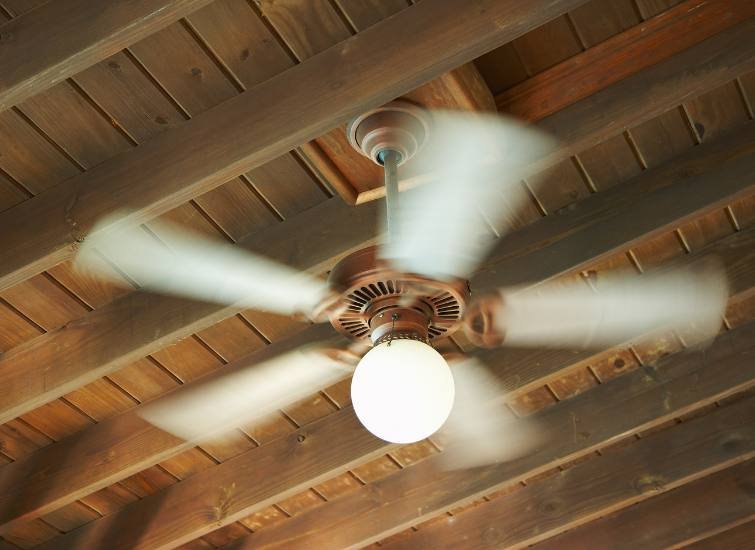Ceiling fans are essential fixtures in many homes, providing both comfort and energy efficiency. When summer arrives and temperatures soar, understanding the optimal direction for your ceiling fan becomes crucial. The answer to the question is straightforward: in the summer, your ceiling fan should spin counterclockwise. This simple adjustment can significantly enhance your cooling efforts and create a more comfortable living environment.
Why Counterclockwise Rotation Matters
The Science Behind Counterclockwise Rotation
The key lies in the science of airflow. When a ceiling fan rotates counterclockwise, it produces a breeze that creates a wind-chill effect, making you feel cooler. This is especially beneficial in the summer months when you’re looking to combat the heat. The counterclockwise motion disperses air downward, creating a refreshing breeze that can make your room feel several degrees cooler.
Energy Efficiency and Cost Savings
Opting for counterclockwise rotation doesn’t just improve comfort; it also contributes to energy efficiency. By feeling cooler due to the wind-chill effect, you’re less likely to rely heavily on air conditioning, which can lead to significant cost savings on your energy bills. It’s a small adjustment that can have a big impact on both your comfort and your wallet.
How to Change the Rotation Direction
Locating the Switch
Most modern ceiling fans come equipped with a switch on the motor housing that allows you to change the rotation direction. This switch is often conveniently located and straightforward to use. If you’re uncertain, consult your fan’s manual for guidance on locating and using this switch.
Adjusting the Blades
In some cases, the direction of rotation can be adjusted by manually reversing the position of the blades. Refer to your fan’s manual for instructions on how to do this safely. It’s essential to turn off the fan before attempting any manual adjustments to ensure your safety.
The Impact on Seasonal Comfort
Summer Comfort Enhancement
Understanding the seasonal impact of ceiling fan rotation is crucial for maximizing its effectiveness. In the summer, the counterclockwise rotation creates a more pleasant environment by promoting air circulation and preventing stagnant, hot air from settling in the room.
Frequently Asked Questions
1. Can I Leave My Ceiling Fan on All Day?
Yes, you can leave your ceiling fan on all day for continuous comfort. However, remember that fans cool people, not rooms, so turn it off when you leave the room to conserve energy.
2. What If My Fan Doesn’t Have a Reversible Feature?
If your ceiling fan lacks a reversible feature, you can achieve a similar effect by adjusting your thermostat. In the summer, set your thermostat a few degrees higher when the fan is on, and vice versa in the winter.
3. Are There Energy-Efficient Ceiling Fans?
Yes, many ceiling fans come with the ENERGY STAR label, indicating superior energy efficiency. Look for this certification when purchasing a new fan to ensure you’re making an environmentally conscious choice.
Conclusion
In conclusion, the direction your ceiling fan spins in the summer is a critical factor in optimizing its cooling effects. Choosing the counterclockwise rotation not only enhances your comfort but also contributes to energy efficiency and cost savings. Remember to make the seasonal adjustment and explore additional features, such as reversible options, for year-round comfort. By harnessing the power of your ceiling fan correctly, you can create a more enjoyable living space while being mindful of both your comfort and the environment.
For further insights on home cooling and energy efficiency, consider exploring resources from reputable sources such as the U.S. Department of Energy, ENERGY STAR, and Consumer Reports.


